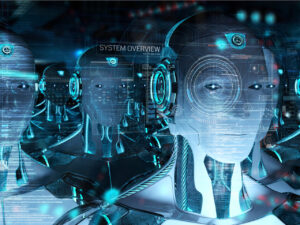What awaits us in 2021?
Don’t worry, we have no intention of talking about the country’s pandemic future, or the chromatic subdivision of Italy, or the vaccine situation. We’d like to take a look at what’s going to happen from a digital transformation perspective in the coming months. In practice, what are the digital transformation trends of 2021?

The automation of data integration. The amount of data that is gradually being collected in Data Lakes and Data Warehouses is reaching enormous levels. Investments in the global data lake market are expected to reach over $ 12 billion by 2024, according to Advanced Market Analytics. Well, the challenge today is no longer to collect data – an activity that we naturally take for granted and that is at the basis of any business – but to quickly obtain a detailed, clear and complete vision of the same.
To do this, it is necessary to integrate, interpolate and analyze the data coming from multiple sources in order to identify new market niches, promote customer loyalty, optimize up-selling and cross-selling strategies, improve customer care and services.
However, most of the time of the work commitment, about 75%, is used for data integration, but with the help of Business Intelligence it is possible to reduce that time by automating the process in order to concentrate the work on data analysis, enhancing them and translating them into actions.
What if we asked you to tell us what in your opinion is the most unexpected but incredibly useful source of data today? If you think it could be one of the many touch points from which information is obtained today, such as apps, sites, physical stores, social networks, newsletters, advertising initiatives on Google or other portals, the answer is no. Or even better: that’s not the only one. A very important source that often tends to be underestimated is predictive analysis, which involves not only the data collection process within a Data Lake – a “treasure” that remains in the company, but also modeling, analysis and interpolation of the data themselves.
With predictive models and AI and Machine Learning tools, companies can run scenario-based simulations and real-life information, providing them with data on circumstances that would be difficult, expensive or even impossible to test in physical environments.

From the IoT to the IoB. When the employees of a factory in the US returned to work last March following the closure due to the Covid pandemic, they found themselves with sensors and RFID devices capable of checking if they washed their hands regularly, with systems of computer vision that checked if the mask was worn correctly and with speakers that warned when the antivirus protocol was violated. And that’s not all.
The behavioral data collected by the digital tools deployed (sensors, cameras, RFID) were analyzed by the managers of the company and used with the aim of acting on the behavior of workers and, where necessary, modify them, guiding them – in this specific case – in order to be compliant with anti-Covid measures.
Well, this module, which involves the use of digital data collected on the field in order to change the behavior of the individual, has been called the Internet of Behavior (IoB).
With the increase of digital technologies and with the intensification of their daily use, a mass of data and information is produced from multiple sources, which the IoB will be able to collect, cross, process and then use in order to “influence” behaviors.
The domain of clouds. In 2020, cloud services were a godsend in order to keep the economy and our lives from coming to a halt. In 2021, this will only be the case. In the last year, according to IDC, spending on corporate cloud, both public and private, increased by 34.4% compared to the previous year, while non-cloud IT spending decreased by 8%. In 2021, the main public cloud platforms, in particular Amazon Web Services, Microsoft Azure and Google Cloud Platform, will consolidate their dominance in the cloud market and expand their dominance in many sectors of the global economy.
Global cloud spending will grow seven times faster than overall IT spending over this period, according to Deloitte’s projections. IDC expects worldwide spending on public cloud services and infrastructure to nearly double, reaching approximately $ 500 billion by 2023.

The coronavirus pandemic has triggered an acceleration in the use of Artificial Intelligence and data. Virtually overnight, companies, governments and other agencies have found themselves having to work together in order to create a faster solution stopping the spread of the virus. Data, AI and Machine Learning were and are the most appropriate tools. And, given the trend, the work started in 2020 will continue in 2021.
The proliferation of AI will impact our lives, starting with how we shop, what we eat, how we hire someone to what we do for entertainment. It will be powered by amounts of data that use powerful processing capabilities. AI will need monitoring to make sure it is used for positive purposes and this will be a joint effort of government and industry, but undoubtedly its use continues to grow rapidly, even more so now that resources are becoming cheaper and more available to companies around the world.
Food for thought…
- Did you know that a team of Harvard University researchers is experimenting with solutions that use DNA as a storage material for digital data?
- Do you know 2024, the “Il Sole 24 Ore” podcast about how technologies are changing the world?
- ShopFully has included in its network 65 thousand sensors positioned in thousands of points of sale.
- Here instead you will find the measures presented by the European Commission about the update of the rules for digital markets.

